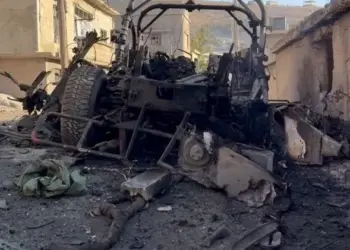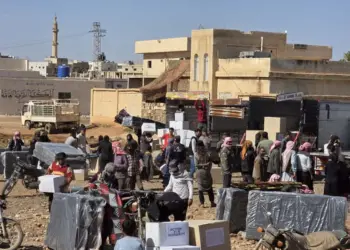Hopes for calm in the north-east following an agreement between the Syrian Democratic Forces (SDF) and interim authorities to demilitarize the Tishreen Dam area are fading. Despite rising tensions, troop mobilizations and mutual denouncements on both sides, the SDF and interim officials have been careful not to cross any key thresholds of aggression—yet. Declarations from a recent Kurdish Dialogue Conference in Qamishli were primarily aimed at rallying Kurdish public opinion and unifying all parties ahead of future rounds of bargaining with Damascus. However, these demands were also meant to remain flexible within the broader negotiation process. Damascus’s response, while pointed, also did not see talks disrupted. Amidst this complex diplomatic jostling, ISIS will continue to seek out all available opportunities for expansion and resurgence. Recent statements by the group against interim officials signals an important shift in messaging, as its leadership likely looks ahead to a new, longer-term opponent. While General Security forces and civilians west of the Euphrates have been largely spared from extremist attacks in recent months, it looks increasingly likely that ISIS intends to start disrupting this period of relative calm in the near future.
Developments in the Eastern Aleppo Countryside
Relations between the SDF and interim authorities have rapidly deteriorated despite a breakthrough ceasefire agreement reached between the Syrian Democratic Forces (SDF) and interim authorities on 12th April to demilitarize the Tishreen Dam area. Prior to the agreement, ongoing clashes between the SDF and Turkish-backed Syrian National Army (SNA) in the eastern Aleppo countryside had continued for months without changing frontlines around the Tishreen Dam. The agreement initially provided hope for a roadmap to end SDF-SNA hostilities and begin normalizing the security situation in eastern Aleppo.
The agreement initially saw some notable successes, not least the initiation of joint patrols between the SDF and Ministry of Defense forces, as well as stated commitments by the SDF to begin withdrawing troops from front-line areas. However, implementation of the agreement has stalled, and its future increasingly called into question.
But several new factors have begun to threaten the arrangement’s foundations in recent weeks, calling the prospects of a durable de-escalation into question. The SDF in particular has begun imposing new conditions while going back on its promises to withdraw troops. Authorities in Damascus accused the SDF of impeding the distribution of state services to areas they nominally control in eastern rural Aleppo, claiming this violates the ceasefire agreement reached in mid-April.
The SDF is currently reinforcing its presence around the Qere Qozak Bridge and south of the Tishreen Dam near Al-Jurniyeh. However, the US-led International Coalition has prevented the SDF from bringing additional military reinforcements directly to the dam site. In response, the interim Ministry of Defense sent significant deployments towards the area surrounding the Tishreen Dam. Although there have been no significant deployments by interim government forces around the Tishreen Dam so far, fears are growing among local residents that renewed hostilities could be imminent.
Kurdish Political Developments
Precipitating the renewed hostilities, Syria’s Kurds held a national conference last week in Qamishli, bringing together approximately 400 representatives from Syria’s main Kurdish political and armed groups, including the SDF, their political branch the Democratic Union Party (PYD) and their rivals in the Kurdish National Council (KNC).
The Kurdish National Dialogue Conference aimed to unify Kurdish positions in negotiations with Damascus, with participants agreeing to broad demands, including:
- A democratic, pluralistic form of bicameral parliamentary government that respects all international human rights conventions and guarantees a neutral attitude towards religion;
- Recognition of Syria’s multicultural, multi-ethnic and multi-religious character as well as the cultural, linguistic and political rights of all groups, including Arabs, Kurds, Syriacs, Assyrians, Circassians, Turkmens, Alawis, Druze, Yazidis and Christians;
- Recognition of historical violations by the former regime against Kurdish communities—by remedying the Ba’athist Arabization of northern Hasakeh in the 1970s and the enforced statelessness of ajanib and maktoumeen Kurds, amongst other things—while ensuring the safe return of refugees and IDPs (including those displaced by Turkish offensives around Afrin, Ras al-Ain and Tal Abyad;
- Unification of Kurdish-majority areas as an integrated administrative unit within a federal national Syria;
- Guarantee gender equality across all state institutions;
- Recognition of Kurdish and other minority languages as official languages of Syria alongside Arabic.
Conference attendees also rejected interim authorities’ controversial Constitutional Declaration, which many have seen as a thinly veiled power grab. Participants additionally criticized interim authorities’ focus on centralizing political authority in Damascus. However, they emphasized that their goal was greater self-administration within a decentralized state structure, rather than full autonomy.
In the wake of the conference, tensions spiked , with the conference declaration drawing a swift rebuke from the office of interim President Ahmad al-Shara’a. In a statement, the interim president rejected the resolutions adopted at the conference, accusing Kurdish groups of seeking to politically separate from the rest of Syria and undermine the central authority of Damascus. Any push for a decentralized system is a “red line” for al-Shara’a.
ISIS Activity
Since the fall of the Assad regime in December 2024, ISIS attacks in Syria have fallen precipitously, fueled by an intense aerial campaign by the US-led International Coalition and loss in salience for the group’s recruitment propaganda. However, attacks against the SDF have crept up progressively month by month since then, reaching a new peak in early April, with 10 attacks recorded across the month. The rise in ISIS attacks comes amidst increasing concerns about the security of prisons housing ISIS fighters in the north-east, with the future of funding for maintenance of facilities and salaries for guards now in question. Several major prison breaks by ISIS cells have also been foiled over the past month, underscoring the risk that the extremist group’s ranks could swell in the event of a successful prison break.
Meanwhile, the group has increasingly disseminated propaganda and statements threatening authorities in Damascus. Over the past four months, extremist cells have overwhelmingly focused attacks on the SDF and civilians living in north-east Syria. Only a handful of confirmed plots and attacks have targeted General Security or units operating under the Ministry of Defense.





